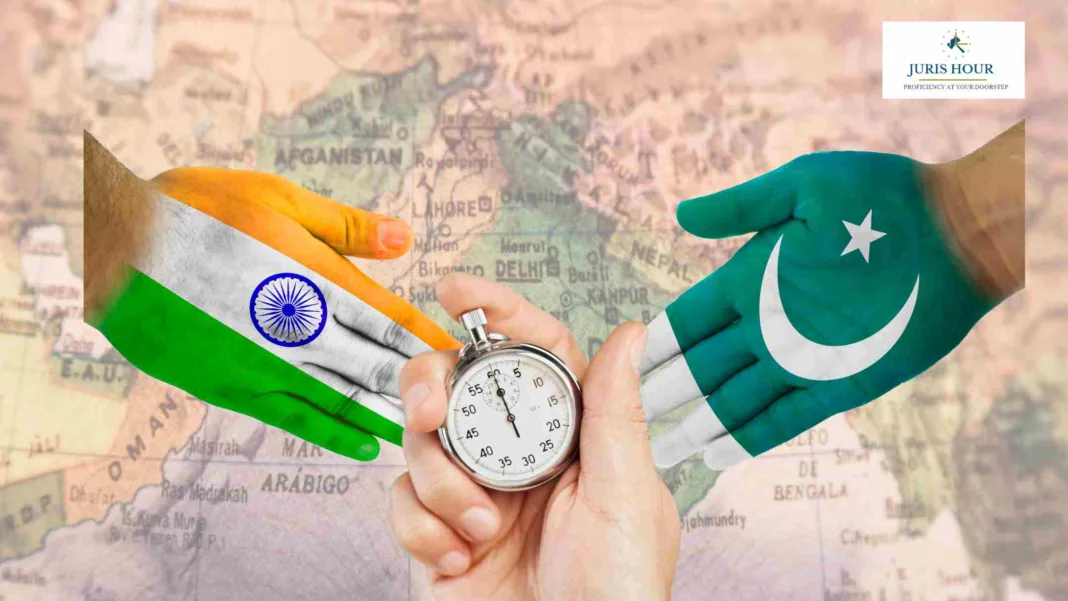The enduring tensions between India and Pakistan have not only led to significant human and geopolitical costs but have also imposed substantial economic burdens on both nations. As of May 2025, following a tragic militant attack in Kashmir, the region faces renewed instability, prompting concerns over the financial implications of potential escalations.
Financial Capacity and War Cost Estimates for India and Pakistan
In the context of escalating tensions between India and Pakistan, understanding the financial implications of a potential conflict is crucial. This section examines the estimated costs of war for both nations and assesses their current financial capacities to sustain such expenditures.
Estimated Cost of War
Historical data provides insight into the potential financial burden of military conflicts:
- India: As per the report by India Today 1990 estimate suggested that a 1,000-hour war with Pakistan would cost India approximately ₹27,000 crore. Adjusting for inflation and current economic conditions, this figure would be significantly higher today.
- Pakistan: As per the report by Scroll.in, during the 2002-2003 period, India reportedly spent around ₹14.6 billion per day on military confrontations, while Pakistan’s daily expenditure was approximately ₹3.7 billion.
These figures underscore the substantial financial commitments required during periods of heightened military engagement.
Current Financial Capacities
India
- Defense Budget: As per the report by The Economic Times, for the fiscal year 2024-25, India allocated ₹6.21 lakh crore (approximately $75 billion) to defense, reflecting a strategic focus on enhancing military capabilities.
- Foreign Exchange Reserves: As per the report by Reuters, as of April 18, 2025, India’s foreign exchange reserves stood at $686.15 billion, providing a substantial buffer to manage external shocks and finance defense expenditures.
Pakistan
- Defense Budget: As per the report by The Economic Times, Pakistan’s defense allocation for 2024-25 is approximately ₹2,122 billion (around $7.64 billion), marking a 17.6% increase from the previous year.
- Foreign Exchange Reserves: According to Daily Times report, as of March 14, 2025, Pakistan’s total liquid foreign reserves were approximately $16.02 billion, with $11.15 billion held by the State Bank and the remainder by commercial banks.
Impact of War on Taxation in India and Pakistan
A full-scale conflict between India and Pakistan would have profound implications for both nations’ fiscal policies, particularly in the realm of taxation. The exigencies of war necessitate increased government spending, often leading to adjustments in tax structures to accommodate the heightened financial demands.
India: Potential Tax Implications
India’s defense expenditure is substantial, with a budget allocation of ₹6.21 lakh crore (approximately $75 billion) for the fiscal year 2024-25. In the event of war, this expenditure would escalate significantly. Historical data indicates that during the Kargil War, India incurred costs close to $1 billion per week. Current estimates suggest that a similar conflict could cost India approximately $1 billion per day, potentially increasing the fiscal deficit by 50% if the war extends over two to three weeks. To bridge this fiscal gap, the government may consider increasing taxes, which could, in turn, affect the competitiveness of Indian-made products in the global market.
Moreover, India’s tax system is already characterized by high rates, which some experts argue have contributed to a plateau in GDP growth. Further tax hikes could exacerbate this issue, potentially leading to a structural slowdown in the economy.
Pakistan: Fiscal Challenges and Taxation
Pakistan’s economic landscape is marked by a narrow tax base and a low tax-to-GDP ratio, hovering around 9%. In times of economic downturn or conflict, tax revenues tend to decline, while government expenditures remain constant or increase, leading to larger budget deficits. To mitigate this, the government may be compelled to raise tax rates, a move that could further strain the already burdened populace.
Recent fiscal policies in Pakistan have included the removal of tax exemptions valued at up to Rs1.6 trillion, effectively shifting the financial burden onto the general public. Such measures, while aimed at increasing revenue, can lead to public discontent and reduced economic activity.
Additionally, Pakistan’s reliance on international financial assistance, such as IMF loans, often comes with stipulations for economic reforms, including tax policy adjustments. In the context of war, meeting these conditions while managing increased defense spending would pose a significant challenge.
Comparative Analysis
The financial disparity between India and Pakistan is evident in both defense budgets and foreign exchange reserves.India’s robust economic position allows for greater flexibility in sustaining prolonged military operations. In contrast, Pakistan’s comparatively limited financial resources could constrain its ability to engage in extended conflict without significant economic repercussions.
This analysis highlights the importance of diplomatic engagement and conflict de-escalation to prevent the substantial economic costs associated with military confrontations.
The Immediate Economic Repercussions
Aviation and Trade Disruptions
In response to recent hostilities, Pakistan has closed its airspace to Indian carriers, compelling airlines like Air India to reroute flights. This detour is projected to cost Air India approximately $600 million over a year due to increased fuel consumption, extended flight durations, and additional crew requirements.
Furthermore, the suspension of the Indus Water Treaty by India has intensified tensions. This treaty, vital for managing shared river resources, is crucial for Pakistan’s agriculture and electricity generation. Its suspension threatens to exacerbate water scarcity issues in Pakistan, potentially leading to agricultural losses and energy shortages.
Tourism and Regional Economies
The attack in Kashmir has severely impacted the region’s tourism sector, which contributes around 7% to its GDP and employs approximately 200,000 people. The decline in tourist arrivals not only affects local businesses but also reduces state revenues and hampers post-pandemic economic recovery efforts.
Historical Financial Costs of Conflict
Past Wars and Military Expenditures
Historically, conflicts between India and Pakistan have led to significant military expenditures. For instance, during the 2001-2002 Operation Parakram, India spent an estimated $1.8 billion, while Pakistan’s expenses were around $1.2 billion. The 1999 Kargil War cost India approximately Rs 15 crore per day, highlighting the immense financial strain even short-term conflicts can impose.
Economic Strain on Pakistan
Pakistan’s economy, characterized by high fiscal deficits and reliance on foreign aid, is particularly vulnerable during conflicts. In 2019, the country faced a balance of payment crisis with a deficit close to $18 billion and foreign currency reserves at an all-time low of $8 billion . Engaging in prolonged military conflicts could exacerbate these issues, leading to increased borrowing and potential economic instability.
Long-Term Economic Implications
Impact on Foreign Investment and Markets
Military conflicts tend to deter foreign investment due to heightened risk perceptions. During the Pulwama attack in 2019, Foreign Portfolio Investors withdrew Rs 3,000 crore from Indian markets . A full-scale war could lead to significant capital flight, depreciation of the rupee, and increased inflation, undermining economic growth and investor confidence.
Infrastructure and Developmental Setbacks
Conflicts divert resources from developmental projects to defense spending. The Delhi-Mumbai Industrial Corridor, a significant infrastructure initiative, could face delays or damage during conflicts, affecting industrial output and employment . Additionally, increased defense budgets may lead to cuts in social sector spending, impacting education, healthcare, and poverty alleviation programs.
Read More: Arvind Shrivastava Takes Charge As Revenue Secretary


